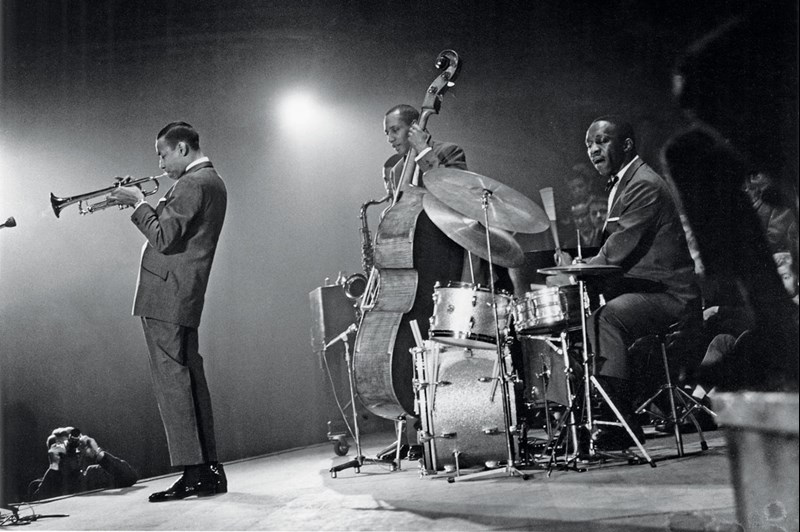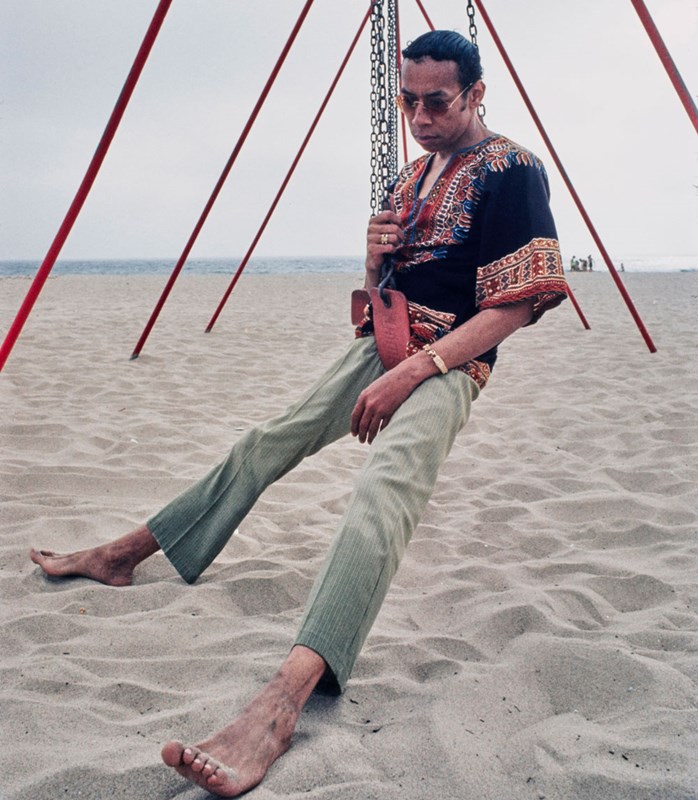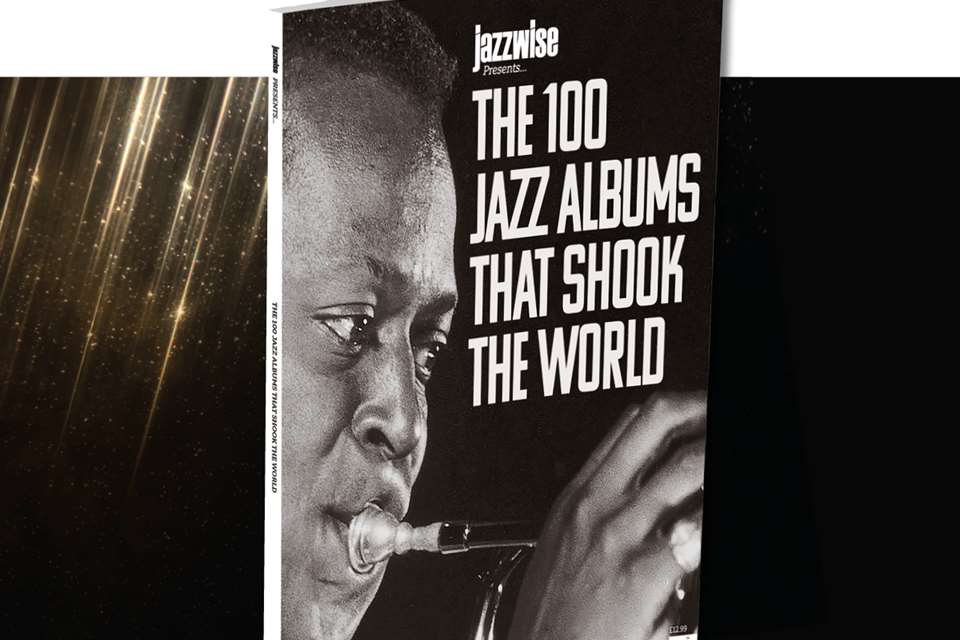The life and tragic death of Lee Morgan: “He was a young man, already older than his years, thrilled with his talent and the wonders of the world around him”
Stuart Nicholson
Monday, October 11, 2021
In his short but eventful life, trumpeter Lee Morgan rocketed to the highest echelons of jazz in double-quick time – playing with and Art Blakey as a teenager and recording with John Coltrane. Stuart Nicholson dives deep into the difficult truths behind this most mercurial of jazz musicians and assesses his legacy today
![Lee Morgan [Photo: Joel Franklin, Capitol Archives]](/media/216839/lee-morgan-joel-franklin-capitol-archives.jpg?&width=780&quality=60)
It is, perhaps, a quirk in the human condition that sees fascination in the collision of art and excess. From it emerged a new romantic hero, usually portrayed as victim, martyr to the art that made him or her famous. But the 20th century hero need not have lived a life that was noble, but one that held great promise, only to be dashed by a needle in a vein. The contradiction was that while audiences didn’t necessarily approve of illicit drug use, there remained a fascination in trying to discover what drove prodigious talent to such extremes of behaviour.
When trumpeter Lee Morgan succumbed to addiction – many say because of the proselytising ways of drummer Art Blakey – he twice tottered on the brink of a premature route to eternity, but twice cheated the seemingly inevitable; only to be eventually claimed by a bullet through the heart, fired by the one person who claimed to love him more than anyone – his common law wife Helen More, an older woman who had been the driving force behind his rehabilitation from drug addiction.
Any examination of Lee Morgan’s extensive output on the Blue Note label across some 25 albums yields a legacy of some of the best performed and most imaginatively executed solo work from the Golden Era of Hard Bop. Take his work on John Coltrane’s early 1958 masterwork Blue Train (Blue Note), for example. Here, the 20 year-old trumpeter leads the ensemble with enormous authority and maturity, bursting out of the ensemble to solo on Coltrane’s ‘Locomotion’ with its tricky chord changes with confidence and an effortless command of his instrument. Here was a young musician who seemed truly destined for greatness. Yet just 12 years later, when he recorded Lee Morgan Live at the Lighthouse, he was rebuilding a career that had been perilously close to coming off the rails as a result of addiction to hard drugs.
On Live at the Lighthouse Morgan’s approach is quite different to the Blue Note albums that preceded it – The Gigolo, Caramba! and The Sixth Sense. Here he was moving away from blues forms and regular changes to more open structures. When the album was originally released as a two-LP package, an entire track filling each side of the LPs, it succeeded in capturing Morgan’s fiery quintet – Morgan (trumpet and flugel), Bennie Maupin (flute, bass clarinet and tenor saxophone), Harold Mabern (piano), Jymie Merritt (bass) and Mickey Roker (drums) – in exceptional form. In 1996 it was reissued as a three-CD set with eight previously unissued performances that were all of excellent quality.
Now, Blue Note Records is later this spring [at the time of writing, a release date had not been finalised] reissuing every known track from the Lighthouse sessions from 10, 11 and 12 July 1970 in an eight-LP album package that provides an in-depth study of an exceptional talent at a time in his life when his performances were some of the most daring and experimental of his career.
A trumpet soared out of the band into a break that was so vividly brilliant and electrifying that all conversation in the room stopped
Nat HentoffYet when Morgan began his life, it was as far removed from a junkie’s lifestyle that could be imagined. He enjoyed a strong, supportive family background, his father, mother and sister all keen amateur musicians with strong connections to the church. He was a keen and able student and a capable pianist who took to the trumpet at age 13 and progressed with prodigious speed. Mentored by Clifford Brown, who took a special interest in helping develop Morgan’s talent, while still in school he became a regular on the highly active Philadelphia jazz scene, such was his precocious talent.
At age of 15 he was challenging Sonny Stitt in a jam session and in the summer of 1956 he played for two weeks in Art Blakey’s Jazz Messengers when the band played Morgan’s home town of Philadelphia. A month after he graduated from high school, he was a featured soloist in Dizzy Gilespie’s big band, with whom he remained for two years. When the band first played New York with Morgan newly installed in the trumpet section at the end of 1956, he was immediately signed by Blue Note records, and Morgan’s debut on the label, Lee Morgan – Indeed, shortly followed.
When Gillespie’s big band played Birdland, critic Nat Hentoff had good reason to recall the date: “Every listener to jazz has had a few experiences so startling that they are literally unforgettable,” he said, “One of mine took place during an engagement the Dizzy Gillespie big band had at Birdland. My back was to the bandstand as the band started playing 'Night in Tunisia.’ Suddenly, a trumpet soared out of the band into a break that was so vividly brilliant and electrifying that all conversation in the room stopped and… I turned and saw that the trumpeter was the very young sideman from Philadelphia, Lee Morgan”.
In July 1957, Gillespie played the Newport Jazz Festival and Morgan’s ‘Night In Tunisia’ feature can be heard as a bonus track on the 2007 Compact Disc reissue of Dizzy at Newport (Verve).
When Gillespie disbanded his orchestra in early 1958, Morgan settled in New York, and applied to study at Juilliard. Before he could begin his studies, he got an opportunity to join Art Blakey’s Jazz Messengers on a permanent basis. In his biography Lee Morgan: His Life, Music and Culture, Tom Perchard, Professor of Music at Goldsmith’s, University of London, says that when Morgan and pianist Bobby Timmons joined the Messengers, Blakey told them, “I’ll have you guys turned on in two weeks.” He kept his word. “Art Blakey was famous for this,” said an anonymous musician quoted by Perchard. “That’s the way he paid a lot of the guys off. In other words, he gave them drugs, and when it was time to get paid, he took the money.” Another Morgan biographer, Jeffrey S McMillan, in his bio Delightfulee quotes Kiko Yamamoto, a model and dancer whom Morgan married after a two-week courtship in Chicago: “It was a really bad addiction for him. Some people, like Art for instance… Art always controlled it… it never really took over his life”, she said.

Lee Morgan, Jymie Merritt and Art Blakey in a still from the documentary I Called Him Morgan
Yamamoto moved in to Morgan’s New York apartment but after his escalating habit forced him to leave the Messengers, they both returned to Morgan’s parents’ house in Philadelphia. However, once it became clear that he had no interest in anything but heroin, she walked out. “Art was able to work and do whatever else he had to do”, she later explained. “Lee wasn’t like that. He was not a functioning drug addict. At first, yes, but as he got more involved with it, it just became impossible.”
Morgan dropped out of jazz for two years, and with his trumpet sold, his lip deteriorating, in 1963 he was admitted into Narcotic Farm in Lexington, a hospital which had played host to addicts such as William S Burroughs and Chet Baker. Amid rumours that he had either died or joined the army, Morgan returned to New York November 1963. Although he was not completely cured, Morgan’s Lexington experience apparently taught him to manage his addiction, or, as Yamamoto put it, to become a functioning addict. Morgan was almost immediately back in the recording studio, his playing strong and revitalised. However, during the session, the band ran out of material, and legend has it Morgan disappeared into the toilet and wrote out ‘The Sidewinder’ on lavatory paper, the number simply intended to fill the album out. It turned out to be a big hit for Blue Note, bankrolling its ever-precarious finances, the single making the No. 35 spot on the pop charts. It also rescued Morgan’s career – for a while at least.
Needless to say, Blue Note wanted a follow-up to cash-in on the success of ‘The Sidewinder’ and Morgan came up with Andrew Hill’s ‘The Rumproller’, his own tune ‘Cornbread’ from the album of the same name, and ‘Yes I Can, No You Can’t’ from The Gigolo. After his success, Morgan continued to record prolifically for Blue Note, including 1964’s Search For A New Land which went to 20 on the R&B chart. But he was gradually losing control of his drug habit, and a brief return to Blakey’s Jazz Messengers didn’t help, and back with his own band he was finding it increasingly hard to function because of his addiction.
By 1967 he was on skid row, the $15,000 he earned from Blue Note for ‘The Sidewinder’ long gone. With his trumpet in hock, he’d reached the point where he’d say he’d rather do drugs than play music to anybody who tried to help him. McMillan described his plight in Delightfulee as “sleeping on the curb outside Birdland without shoes, sleeping on pool tables in bars, wearing a dirty suit over his pyjamas, stealing a television set from a hotel lobby for quick cash.”
It was at this point in his career, when he could not have sunk any lower, that he met Helen More [There appears to be no definitive spelling of her name: According to both available Morgan biographies, she was More when she met Lee; subsequent writing amended it to Moore, then Morgan, which she adopted as she got close to the trumpeter but apparently this was not legal as she never married him], who was then known in jazz circles as 'the little hip square' as she didn’t do drugs. Kaspar Collins’ film I Called Him Morgan, currently showing on Netflix, is probably the best source for the final five years of Morgan’s life. The documentary owes much to Larry Reni Thomas’ The Woman Who Shot Lee Morgan. Kasper Collins used Thomas’ interview tapes with More for the documentary.
It seems More ran an open house for musicians, described as 'a soulful version of a bohemian jazz salon in Hell's Kitchen', with interviewees testifying to the marvels of her cooking. On one freezing night in 1967, Morgan turned up, described by More as, “Raggedy and pitiful. For some kind of reason, my heart just went out to him”. He told her had just hocked his coat and that earlier his trumpet had gone the same way. More asked him how was he going to work if he didn’t have an instrument, “I’m not going to give you the money because you might spend it on drugs”, she said and promptly retrieved his trumpet and coat herself from the pawn shop.
After that, she said, Lee Morgan “hung on to me.” Morgan moved in with her and she “took total control of him.” She fed him, nursed him, urged him into rehab and then back into composing and playing – initially very difficult as his embouchure had been damaged when he had been hit in the face with a length of lead piping, loosening several teeth – such are the perils of a junkie lifestyle. Bit by bit, More went about restoring Morgan’s career. Although they never married, they lived together and were introduced as husband and wife. More took Morgan’s name, became his manager, booked his comeback gigs, handled the money, ensured he was punctual and reliable and never missed a set and this continued throughout the rest of his career.
According to Bennie Maupin, “She was his confidante, his friend, his lover… She had a real quiet strength about her, and he really trusted her.” Encouraged by More, Morgan got back into playing engagements, initially from the Left Bank Jazz Society in Baltimore, Slug’s Saloon in New York’s Lower East Side and the Club Baron in Harlem.
By the summer of 1969 he was confident enough to embark on an ambitious West Coast tour with his group, which is when Live at the Lighthouse was recorded. Blue Note threw an opening night party, but the recording did not begin until the end of the second week. The recent addition of Bennie Maupin, who had replaced George Coleman, saw the saxophonist introduce new and challenging material, a significant move away from the blues-based repertoire Morgan previously relied on for gigs.
Although the band retained the most popular tunes from Morgan’s established repertoire, such as ‘The Sidewinder’, ‘Ceora’, ‘Speedball’ and ‘Rakin’ and Shakin’’, Maupin’s compositions pointed the band in a new direction — ‘Peyote’, ‘Something Like This’, ‘Yunjanna’ and ‘Neophile’. ‘I Remember Britt’, which opens the album, was a Morgan favourite and despite regularly featuring in his repertoire, this is the only Blue Note recording of the composition which he continued to play right up to the night he was murdered. The band had worked through the new material a week before the Lighthouse engagement at the Both/And club, the San Francisco jazz and poetry venue located at 350 Divisadero Street.
Some of these sets were recorded and erroneously released by Fresh Sounds as Live at the Lighthouse. As can be heard from the complete release, of all the material recorded by Blue Note at the Lighthouse Cafe, Hermosa Beach, near Los Angeles, the band had the new material under their fingers, capturing what would be the very best of Morgan’s later period.
“Lee lifted the band and the listeners every night with his free swinging effortless, inspiring, personal pixie-like style”, said Howard Rumsey, Lighthouse musical director from 1949 to 1971. “He was a young man, already older than his years, thrilled with his talent and the wonders of the world around him.”

Lee Morgan [Photo: Joel Franklin, Capitol Archives]
These were good years for Morgan; he was making a comfortable income, he had an in-demand band that had appeared on TV, and they were touring all over the US and aboard. Thanks to More’s excellent cuisine, they entertained a mixture of musicians and showbiz personalties in their apartment, but in the tradition of the best Shakespearian tragedies, during that final year of his life, More began to notice Morgan’s attitude towards her was changing and becoming more distant. She began to suspect he was seeing another woman after he 'went missing' for a couple of days. He was seeing Judith Johnson, spending more and more time with her at her New Jersey home.
Things came to a head when Morgan was playing Slug’s saloon in the early hours of 19 February, 1972. That night it was snowing hard. While Johnson was driving Morgan to the gig she wrote-off the car near the Grand Concourse. Morgan was shaken since it evoked memories of the death of his much loved mentor, Clifford Brown. When they made Slugs on East Third between B and C, a long, narrow saloon with sawdust on the floor, the door swung open and More confronted Morgan and his mistress. Morgan threw her out, without her coat; her gun fell out of her bag. She picked it up and walked back in and shot him, seemingly on an impulse in response to his humiliating infidelity.
Morgan died instantly and his funeral was held on 25 February, 1972 at the Church of The Advocate in Philadelphia, attracting more than 1,000 mourners. More pleaded guilty to second-degree manslaughter and served two years before moving back to North Carolina, where she had begun her life. It was not until January 1996, a month before she died, that she granted an interview to talk about her life with Lee Morgan.
The Complete Live at the Lighthouse is due for release on Blue Note as an 8LP set in Spring 2021
This article originally appeared in the March 2021 issue of Jazzwise. Never miss an issue – subscribe today!
